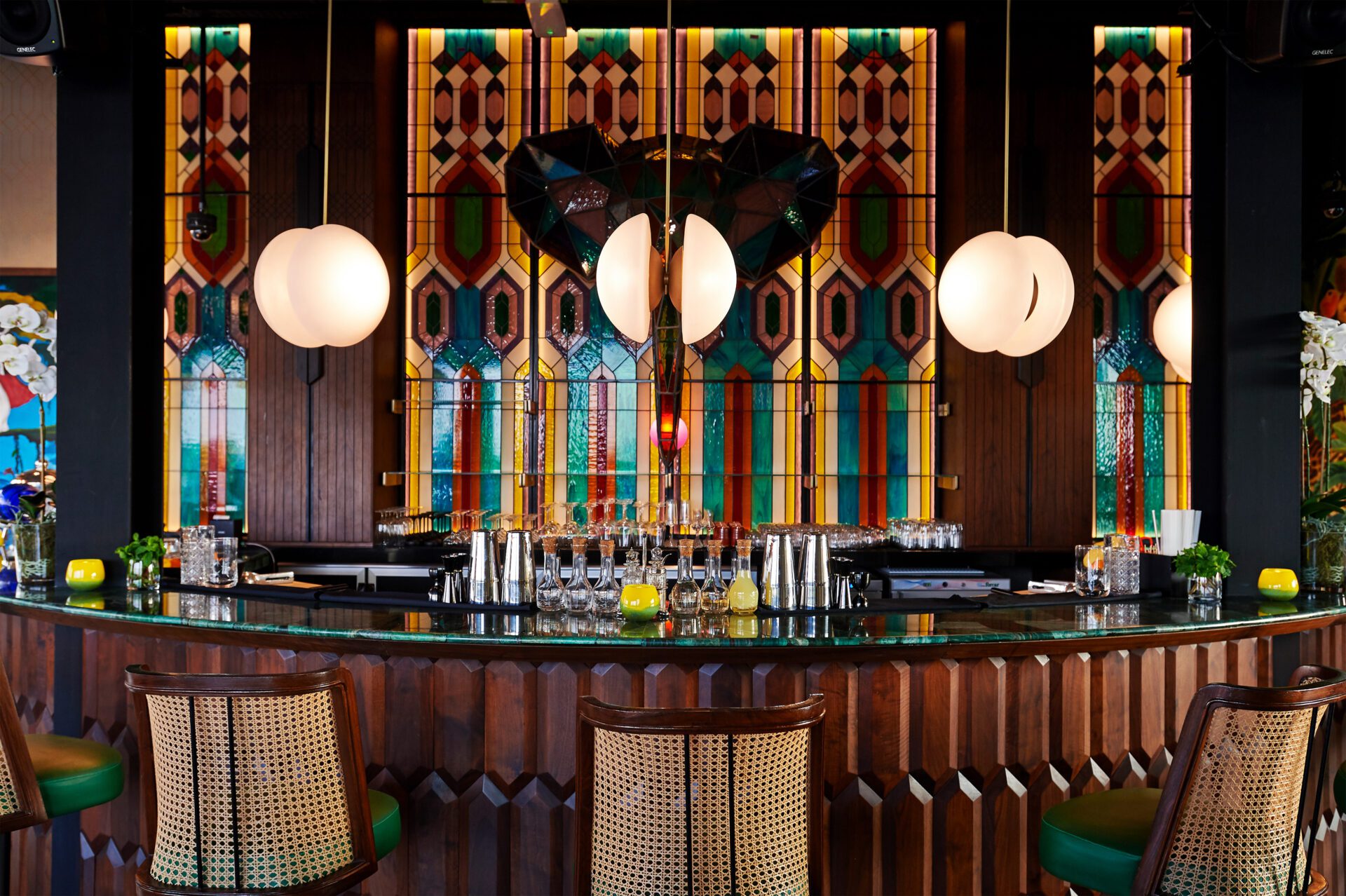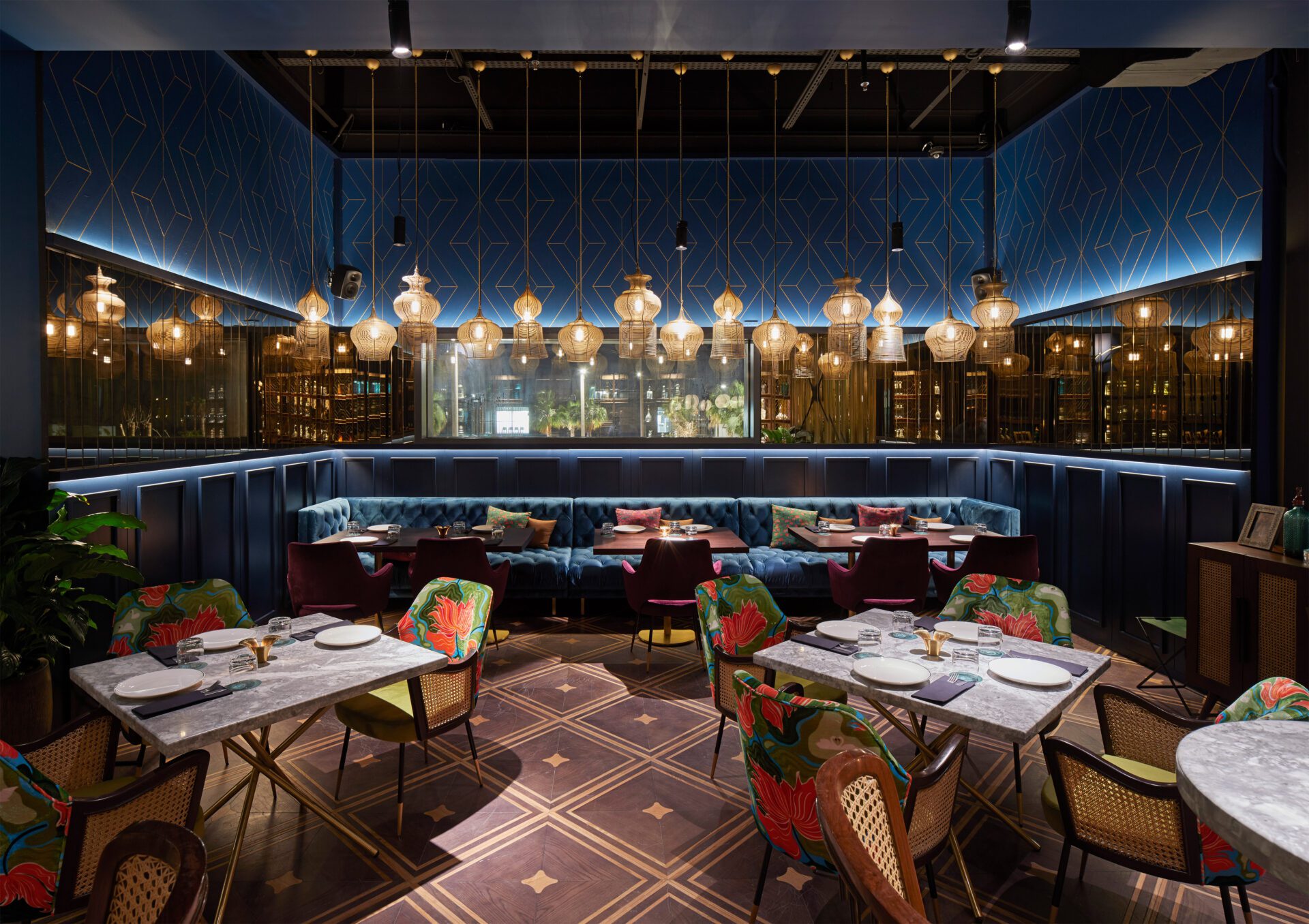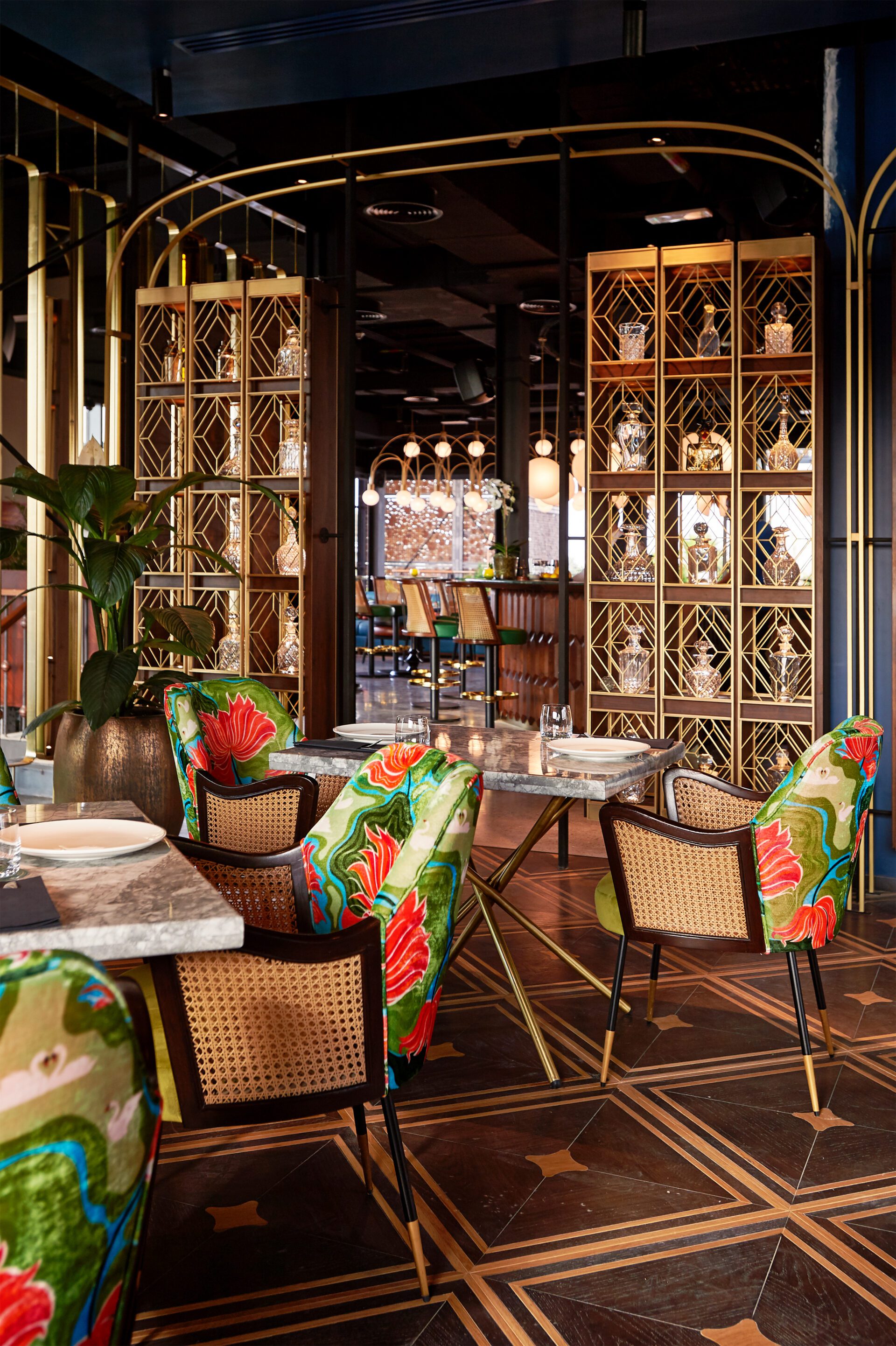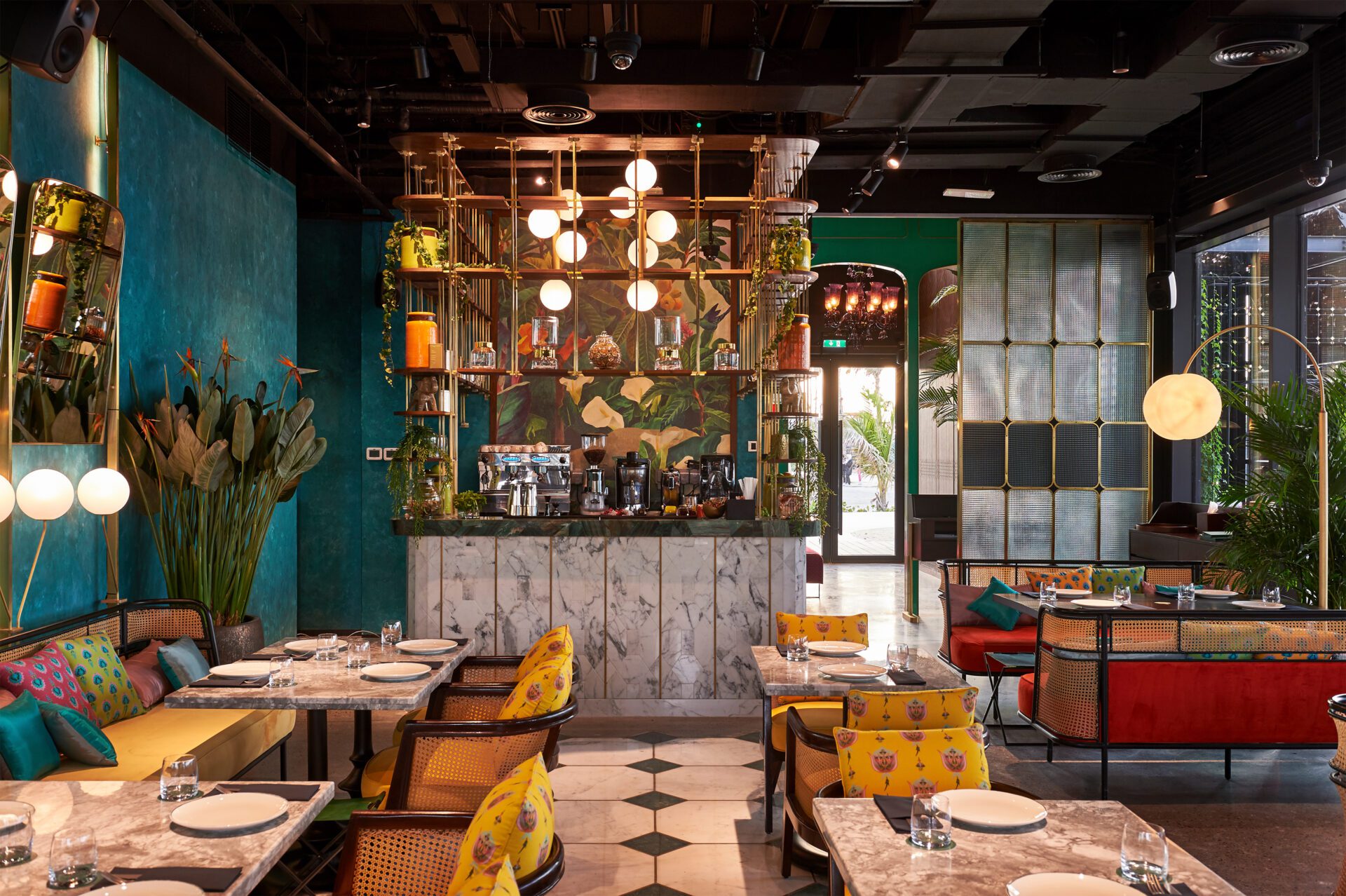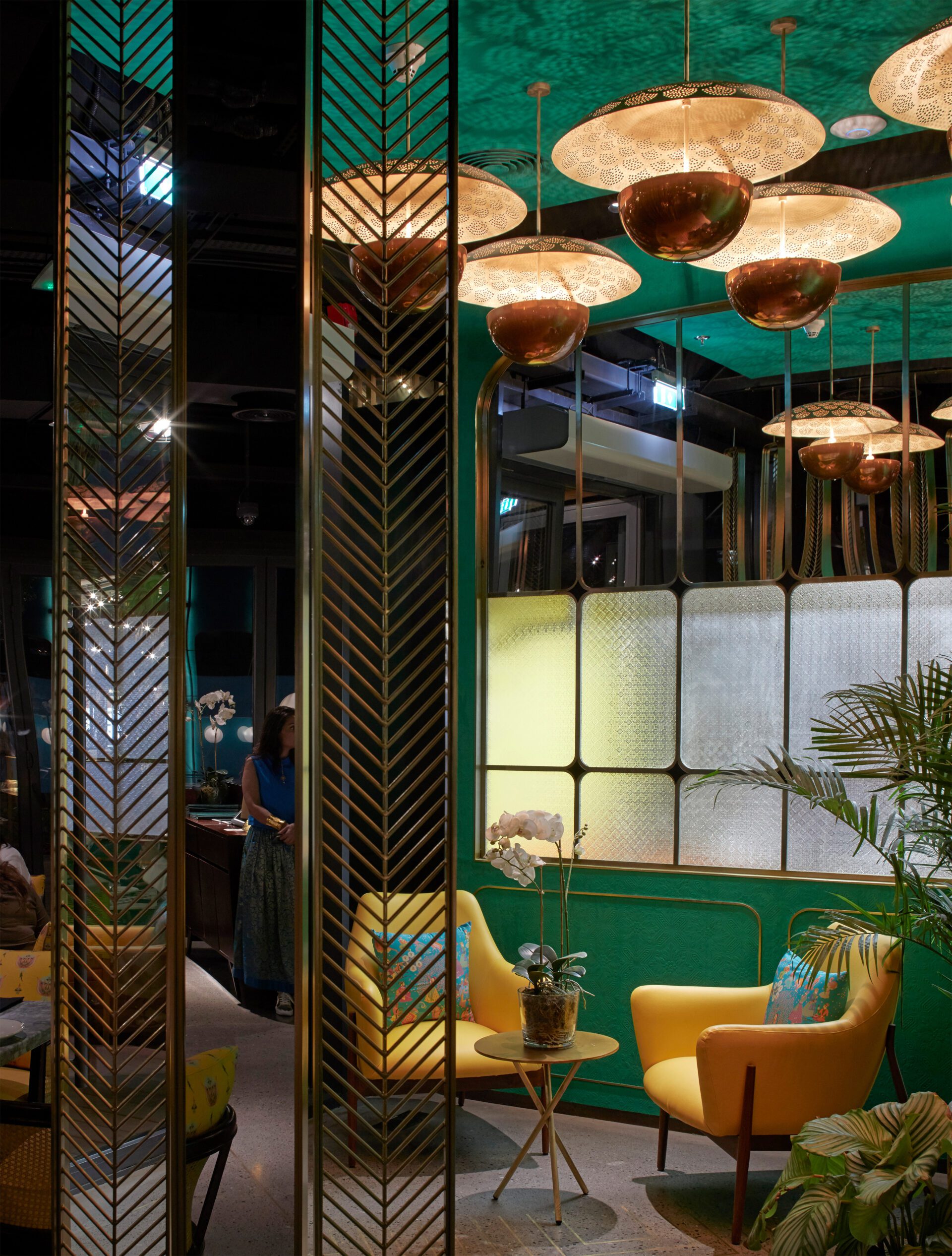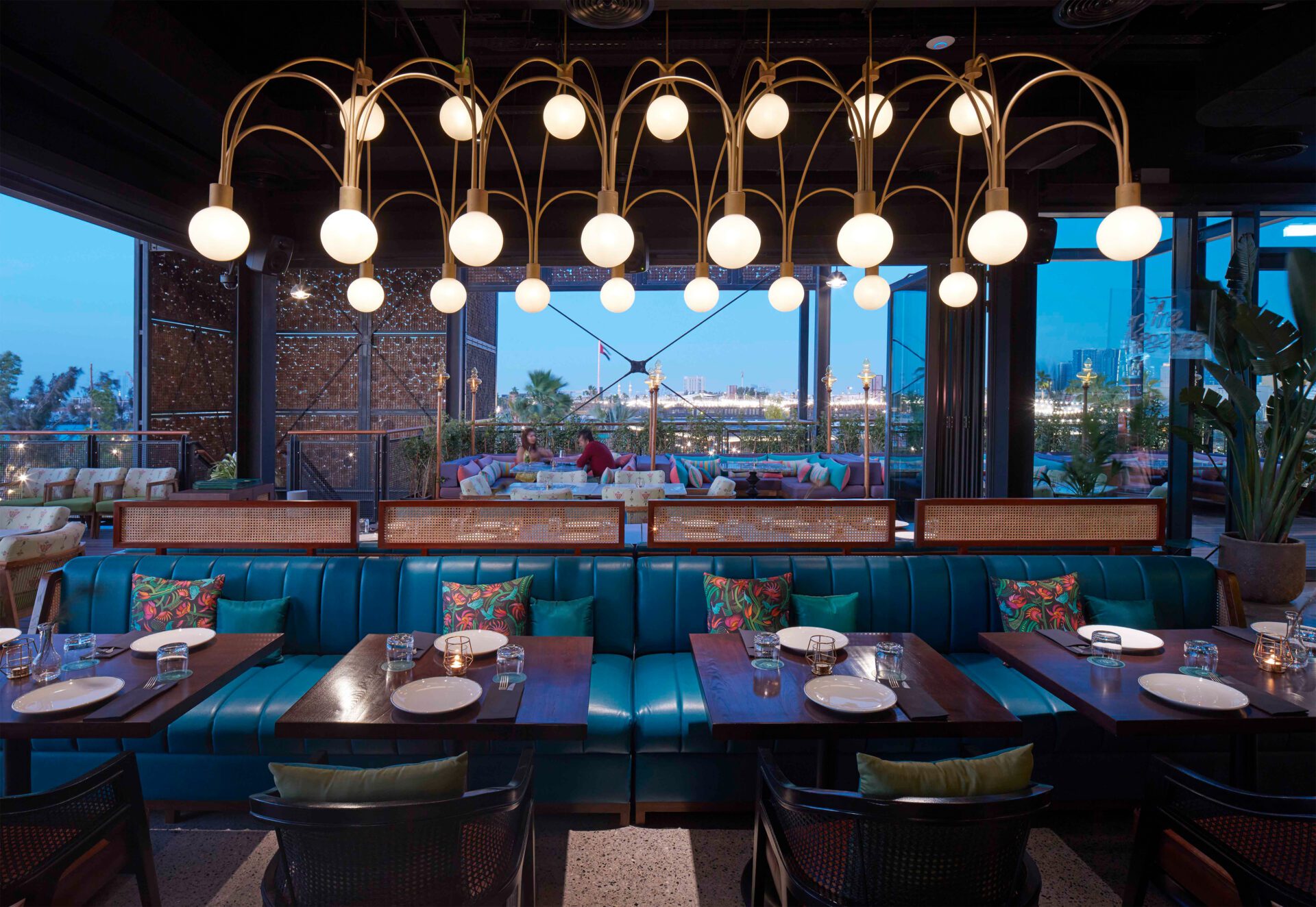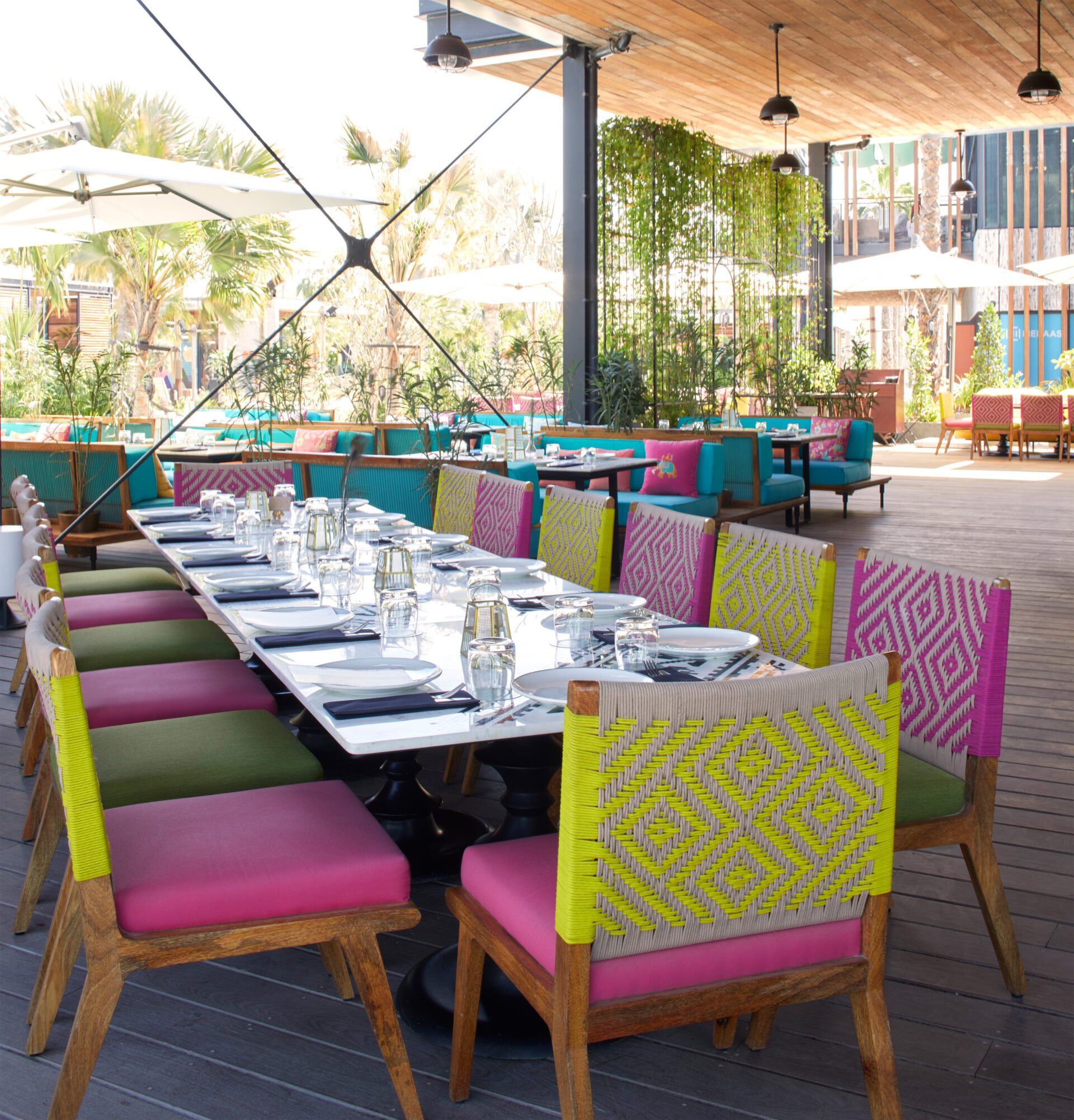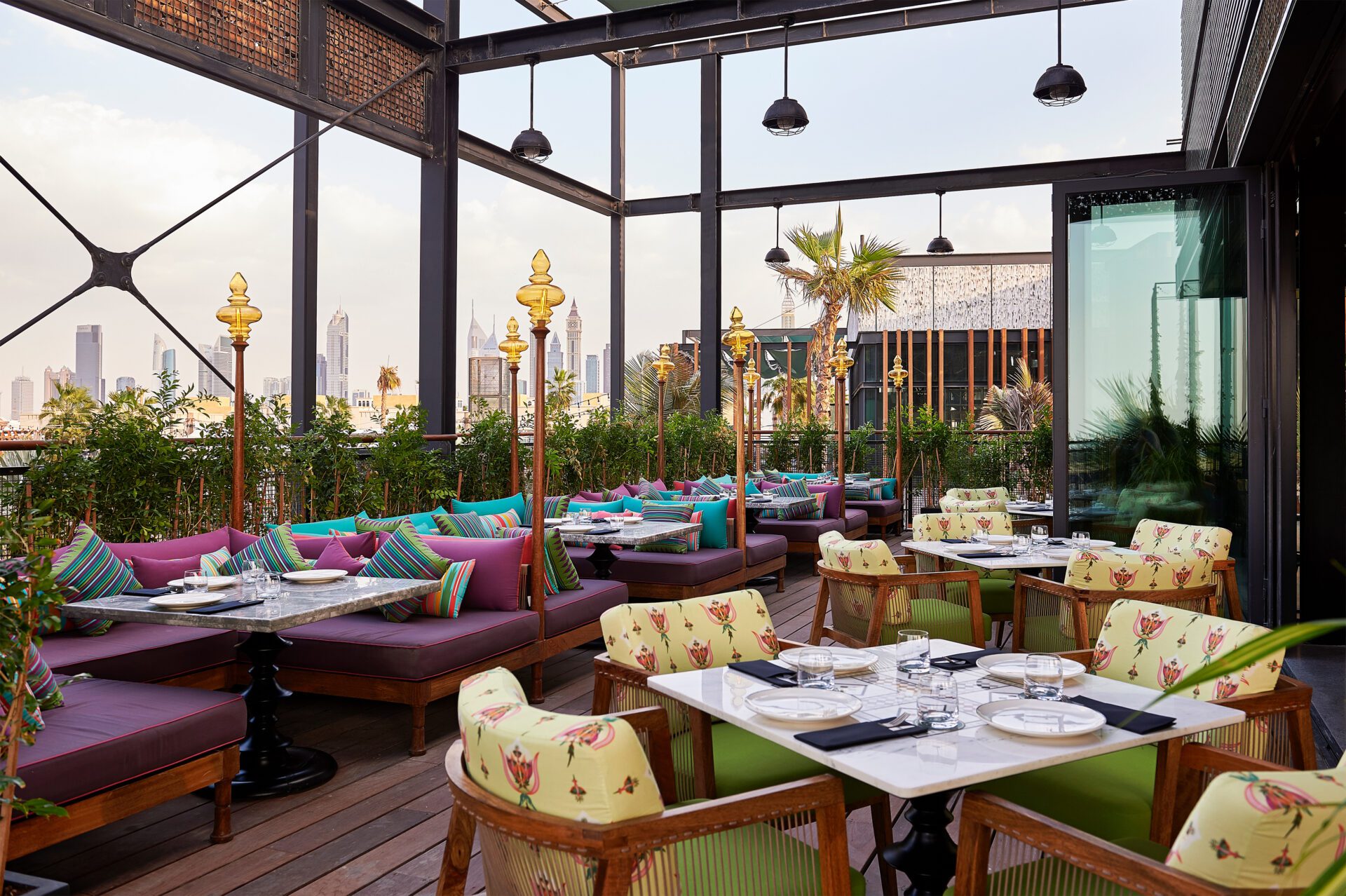Masti Cocktails & Cuisine
Studio Lotus
Short description
Masti, is the Hindi term for ‘frolic’, and probably the only word that encapsulates the client’s vision for this concept restaurant in the heart of La Mer, the hippest hotspot of its time in Dubai. Envisioned to create culinary stories about new India, they wanted to maintain an inherently Indian soul—but with contemporary twists to engage the evolving palettes of a globally-aware audience. The brand reflects its name through a vibe that is progressive, spirited and fresh, while the interiors aim to capture the vibrancy of Indian culture without being clichéd or kitschy. We tried doing that through fun and yet meaningful elements that substantiate the narrative.
The ‘making’ and the ‘made’: pivoted on a series of zones that offer distinct experiences, masti was interpreted in a colourful and quirky rendition of Indian influences pastiched as a modern expression of a marketplace. Leaning on traditional crafts and local techniques, the myriad components were designed and fabricated in India (the making), and then shipped to be assembled and installed in Dubai (the made).
The design created a series of spaces across two floors, each of which offer a unique experience in terms of degree of privacy and dinning style, with colorful take on Indian influences running as a common thread between them. The ground floor is primarily meant for day-time usage, featuring a bright palette and low lounge furniture. A Juice Bar in white marble mosaic, brass and wood emerges as the centerpiece for the zone, a refines take on the typical juice kiosks seen in Indian markets.
On the first floor, a combination of high cocktail tables and plush chairs balances the loosely structured layout of the indoor dining spaces; with the bar counter acting as a spatial anchor, the seating configurations vary from intimate clusters of two and four to banquettes.
Traditional rituals get a graphic makeover: the Elephant Bar is the pièce de résistance on the upper floor. Pinned in the centre, the enormous three-dimensional head is presented in a geometricized, multi-hued pattern borrowed from the traditionally painted motifs often found on ceremonial animals in India. Ascribing to popular stained-glass practices, the six-foot feet tall pachyderm sculpture, along with its flattened backdrop panels were framed and carted across continents to anchor the bar.
Reimagined and transformed: Lighting features too, hint at common Indian design forms—taking the familiar cloth parasol, commonly used at weddings and ceremonial processions—they are stripped off their fabric and clustered to fashion reinterpreted forms. Designed in collaboration with Ayush Kasliwal, these wireframes become arched installations suspended above tables.
The terrace has a baithak-inspired layout for larger gatherings, with traditional Indian low - rise seating with bolsters. Capturing stunning views of the Arabian Gulf and the city skyline, the terrace seating features contemporized takes on Indian crafts, most notably tarkashi (traditional Indian wire inlay work) and stone inlay used to create Ludo board layouts on table-tops.
Inherited techniques: The chairs are hand-wrapped in rope using a traditional weaving method. While their locally available counterparts in India are usually made with natural fibre and in earthy tones—to match the levels of masti demanded by this project, their patterns were drafted in vivacious colours.
Geometric and organic motifs, taken from indigenous board games, borders of regional textiles, and saris, can be seen translated into various elements—be it inlaid marble tables, hand-carved wooden furniture, floral fabrics, flooring patterns or even screen partitions.
The Juice Counter derives its reference from the archetypal road-side juice vendor seen across India. Commonly made of temporary scaffolding, panels or conveniently available material components, and often decorated with pop-culture imagery, these watering holes are a hot favourite for pit stops on a busy day.
The Gin Room, tucked away from the open bar was designed to offer an exclusive space with curated experiences for special guests. Jewel tones and metallic accents were used to offer a heightened sense of regality in understated luxury. A palette rich in colours, patterns and textiles, reflective surfaces and overlays of palatial motifs allude to the princely Indian lifestyles of mirrored palaces, imperial arches, exquisite screens, and delicate detailing; stylistically also speaking very nicely to where it sits in the local context of Dubai.
Entry details
